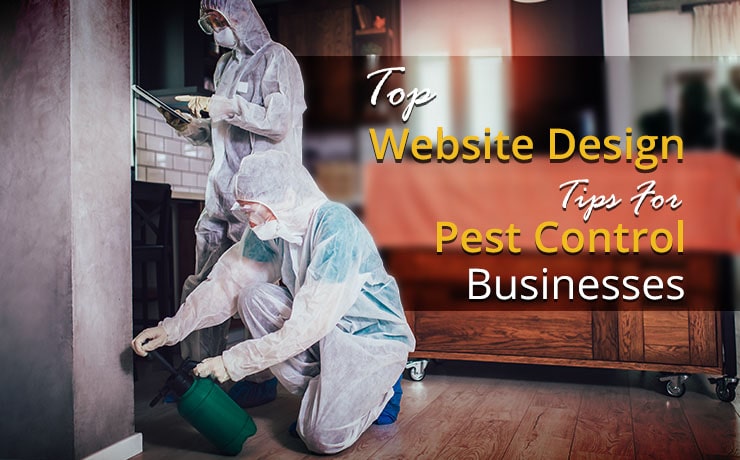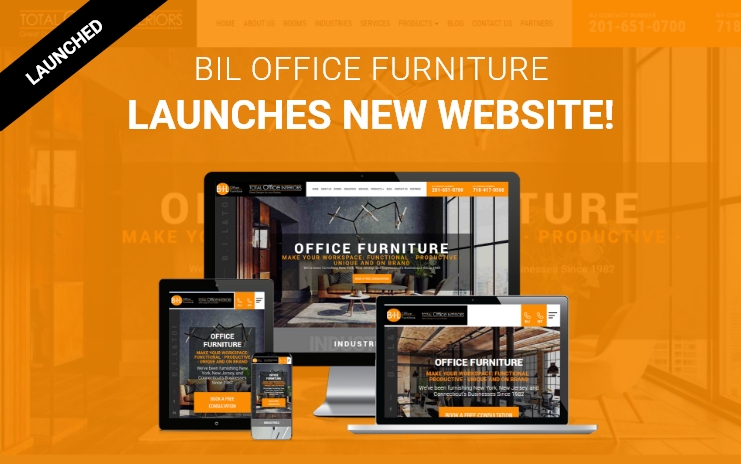
When you are operating a pest control business, it is critical for you to get your website design right. For the vast majority of clients, your website will be the link that will help them find you and select your services over those of your competitors. It, therefore, pays to ensure that you have primed your website in such a way that it draws in the right customers every time. Getting the right website design for your pest control business does not mean that you have to become an expert on everything website. However, it does require you to undertake a few steps to ensure that your website is optimized to generate as much business as it can for you.
Define Your Business for Clearer Website Design Direction
This sounds easy but very often, not understanding your business is one of the top reasons why pest control businesses get their online strategy wrong. While most understand the core nature of their business, there is a need to define it a little more precisely than this. For example, what types of clients does your company serve? They could either be commercial clients, residential homes or both. What kind of pests do you get rid of? What geographical area do you cover? Is local, state or nationwide? The answers to these questions will have a significant bearing on how to present your content and how you optimize your website to be found by potential clients.
Search Engine Optimization
When potential clients search for you online, they need to be able to find you in the first pages of the search result (preferably the first page) and at the top of the results. Google and other search engines use a variety of parameters to rank websites in search results. Fine-tuning your website design to rank higher on search engine results is what is known as search engine optimization. You can optimize your website for search engines by incorporating important keywords into your website content. This is the point where the factors that we spoke earlier come into play. If you operate in Jersey City for example, you might want to incorporate phrases such as “pest control in Jersey City.” It helps to think through the many different ways potential clients could search for you and include keywords and phrases into your content.
Content is Key
Beyond your company and your competitors, very few people know much about pest control. In fact, most people only think about pest control when they have a pest problem in their homes or places of work. This then offers you a great opportunity to educate potential clients and in doing this position yourself as an expert. Always ensure that you write blog articles that offer tips and suggestions on what potential clients can do they find themselves with a pest problem. You can even write articles about how they can prevent such problems from reoccurring again. When people get help from your website, they are more likely than not to reach out to you to help them solve the problem. They are also far more likely to share your website with friends and relatives in case they suffer from the same problem. All these things are good for your business as it means your brand is getting free exposure to many potential clients.
Service Pages Should be Clear
Getting potential clients on your website is just half of the story. The other bit is to convert them into paying customers. For this to happen, thee must be a very clear link between the problem they want to solve and the products/services that you offer. Your product/service pages must be prominently placed on your website design and they must be written in a language that your clients will understand. This means that you should avoid jargon or industry-speak which your clients are unlikely to understand. Not doing this can lead to a situation where your clients leave your site because they don’t think you offer a service that they are looking for.
Many pest control companies will simply place a tab labeled services and list all the services that they have to offer. When a client clicks any of the listed services, they get more information regarding the particular area of interest. This means that in two or fewer clicks, the client can find all the details that he or she is looking for.
Optimize The Landing Page
When clients land on your website, the first thing that they see is your landing page. This is what determines if they will continue to the inner pages or they will exit your website. Optimizing your landing page means having very clear information and graphics on the site. Your landing page must load fairly fast as well and a potential client must be able to navigate out of it with ease.
Use a FAQ Page
FAQ or Frequently Asked Questions allows you to give even more information to a client. The difference however is that the FAQ page is designed to respond to questions that clients might have after reading your service pages. For example, they might be interested in knowing how long the process takes, what happens to their family members during the process and so one. Frequently asked questions can be based on the actual questions that clients ask as well as others that you think potential clients might want to be answered.
Call To Actions are a Must-Have in any Website Design
The purpose of your website design is to generate sales for your company. This means that the site must be adept at getting clients to take action and start their conversion process. This process can take very many forms and your choice can be based on what works best. Many organizations use their CTA to move clients offline so that a human sales representative can then take over the conversation. Such CTAs will ask potential clients to make a call or send a message in order for a company representative to contact them. Other CTAs encourage the client to make an order immediately especially if the website has e-commerce capabilities. Others use a mix of the two depending on their capabilities. Whichever approach you take, the call to action must be very clear and strategically placed for easy access. For example, many pest control companies place the CTA in each of the service pages making it easier for a client to take action immediately after reading the services that are being offered.
Use Reviews
Many potential clients expect companies to say good things about themselves. However, when clients who have had an experience with your company say good things about you, it has a significant impact on potential clients. For this reason, make maximum use of good reviews from clients that have worked with you in the past. Reviews from identifiable clients are even better although you must be careful to get written consent from the clients before publishing their names and reviews online. You can place these reviews prominently on the website with a call to action directed at potential clients.
Get Expert Help for Website Design
While these things cover the basics of what you need to know, there is a lot more that goes to optimizing your pest-control website. Getting expert help in developing content, optimizing it, and ensuring that your website is good, can be can make all the difference. Professionals will help you do search engine optimization as well as help you with analytics. This in turn helps you to learn more about your clients and to ensure that you are constantly updating your site to match your client’s preferences.










